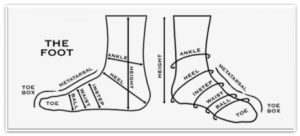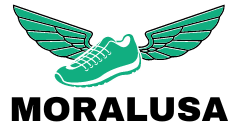How Should Boots Fit? (The Ultimate Guide)
Work boots are a vital component of a worker’s garb. This is because work boots provide the utmost protection and support for your feet. Without them, your feet may be exposed to a range of mishaps that may happen at your place of work. But when workwear boots do not fit appropriately, they do not only mean uneasiness, they may even lead to injury.
So, how should workwear boots fit? This post is here to provide the facts. You will also get some handy tips for finding the appropriate fit for boots.
See also: How to Break In Work Boots Fast
Should your Work Boots Fit Loose or Tight?
Boots of any type should not be excessively tight or excessively loose-fitting. If your workwear boots are excessively tight, they can cause you to be unstable while standing. They can also distort your toes, lead to blister formation, as well as exacerbate structural disorders like mallet toe, bone spurs, and hammertoes. All these can result in substantial foot pain.
If your boots are excessively loose, your feet may slip around excessively inside the boot when walking. This may lead to overpronation, plantar fasciitis, chin pain, arch collapse, as well as blisters.
Determining if your Workwear Boots are too large
To help you ascertain if your work boots are excessively large, here are some essential pointers to check.
See also: How to Shrink Leather Boots
- Use your Index Finger to Check the Size: Put on the boots and slide one of your fingers (preferably your index finger) into the boot. The boot is too large if two or more of your fingers can effortlessly slide in.
- Overlapping laces: If the boots come with laces, check to see if you can tie them without putting too much effort. If the boot’s panels overlap after tightening the laces, or you have to make an extra effort to tighten the laces simply to get the boots to fit, then they are possibly too wide.
- Walk around wearing the shoes: Put on the boots and try walking around in them as much as you can. If you notice that the boots feel loose around the sides, or if you find yourself curling your toes just to prevent the boots from slipping, then they may be too large.
- Push the Toe Box: Wear the boots and try to feel your big toe by pushing down on the front section of the toe box. There should be only a small room between the boot and your big toe, approximately the width of your thumb. If you feel that you can squash the toe box down to the boot’s footbed, the boot is not your size.
Determining if your Workwear Boots are too tight
- Wiggle your toes: Put the boots on and wiggle your toes while standing up straight. If you are not able to wiggle your toes, then the boots are excessively tight.
- Use the finger test: While wearing the boots, slide one of your fingers between the rear of the boot and the rear of your ankle. One finger should effortlessly slide in. However, if you feel that your toes are squashed with one finger inside the boot, they are probably too tight.
See also: How to Tell If Boots are Too Big
Tips to Find the Appropriate Boot Size
Important Considerations For Finding Proper Fitting Work Boots
Flex Point
When selecting a new pair of workwear boots, wear the boots and take a brief walk around the room. Take note of the flex point (the area where the boots bend naturally). This natural fold should align with the section of your foot that flexes when you are walking, which is essentially your toes.

The Width
Your foot’s width is also an important consideration when selecting work boots. Therefore, when taking your feet measurements, you should also ascertain your feet’s width. With this information, you can easily select boots that are specifically made to fit your feet’s width.
The Toe Box
A pair of work boots that fit nicely will possibly leave some space (about an inch) for your toes. However, having more than an inch of space does not necessarily mean you have size down. The important thing is to ensure that the boots properly fit your feet’ width as well as your heel edge.
Remember that if the boots squish your toes together, you risk developing a foot deformity known as hammertoes.
Your Socks
If you will be wearing thick socks with your workwear boots, bear in mind that the socks can significantly affect how comfortable the boots are. Therefore, when trying on new work boots, be sure to do so while putting on the socks you would usually wear in them.
